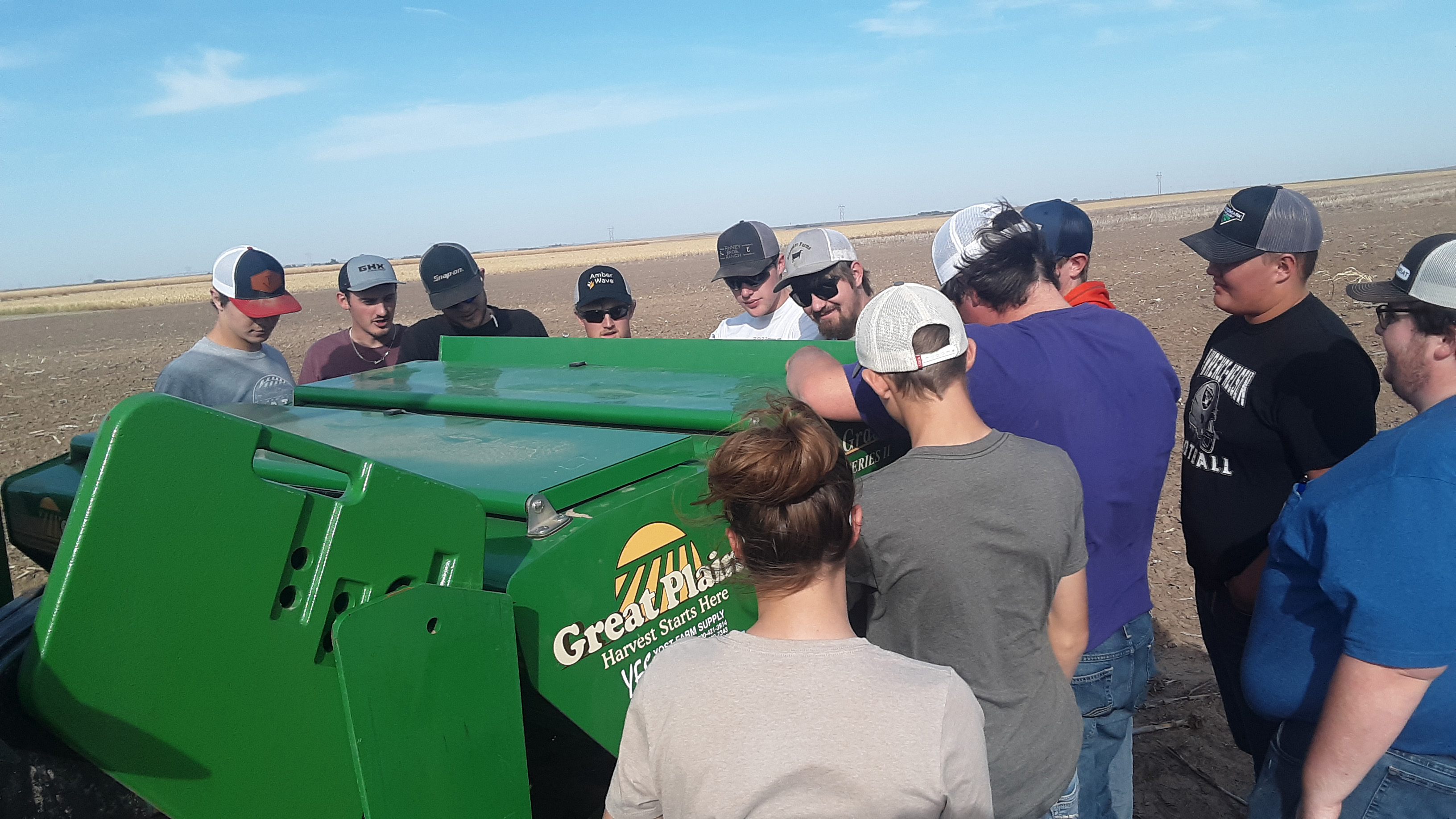Crops practicum is realistic at Stumpf Wheat Center

By NCTA NEWS
A college class assignment for growing winter wheat added several doses of reality this fall in test plots near Grant, Nebraska.
Drought conditions and limited supplies of hybrid varieties are a taste of the real world, shared students from the Crops Practicum II course at the Nebraska College of Technical Agriculture.
Aggie students of Dr. Brad Ramsdale had three main components for their project:
1) Select a hybrid variety of winter wheat (ranking top five choices)
2) Plan a seeding rate desirable for the yield goal and crop conditions
3) Decide yes or no on use of a starter fertilizer
Three-person teams each have a small 6-foot x 40-foot test plot to manage with the assistance of staff and scientists at the Harvey J. Stumpf International Wheat Center east of Grant. Each plot is replicated three times for research purposes.
“First we took soil samples, and in our second visit we were able to watch the test plots get planted,” said Gavin Tremblay of Hoxie, Kansas. “I live back in northwest Kansas, so wheat production is very important there, too.”
Tremblay is a second-year diversified agriculture student at NCTA, and a member of the crop judging team.
For the practicum course, Tremblay and his teammates, Spencer and Joel, opted to use a starter fertilizer. For seed selection, the team received their second choice, a variety called WestBred Grainfield.
“I’d like to see the response to no starter fertilizer,” Tremblay said of the research trial. “I really just want to see how hearty the wheat crop can be, given how dry it is there (in Perkins County).”
Planning for planting
“I am from an area that is not a very big farming community and haven’t had the opportunity to be around extensive crop production,” said Codi LaBorde of Milliken, Colorado.
“I have observed that there is a lot more planning that goes into crop production than what you see from the outside,” she said. LaBorde also is a second-year competitor on the NCTA crop judging team.
Part of her take-away in the research experience, she said, is learning about planning, communication and understanding how inputs and soil moisture can affect yields.
“I’m looking forward to seeing how the plants come up because it’s a lot drier out there at Grant,” she said. “We have better moisture at the fields here at campus.”
The students will be making treks this fall and next spring between the Curtis campus and the Stumpf site, a 150-mile round trip. Both are part of the University of Nebraska system, which provides unique hands-on learning programs.
“We will also be participating in a wheat nitrogen experiment that will include utilizing a drone sensor for determining spring nitrogen needs,” Professor Ramsdale said. “The project is primarily working with Nicolas Cafaro La Menza, cropping systems specialist at the West Central Research, Extension and Education Center, and Samantha Daniel, crops and water extension educator for Perkins County.”
Part of the University of Nebraska system, the Nebraska College of Technical Agriculture is a two-year institution with a statewide mission of preparing students for successful careers in agriculture, veterinary technology and related industries. NCTA is known for its affordable tuition, high job-placement rate for its graduates, and for the success of student teams in competitive activities including crops judging, ranch horse events, livestock judging, shotgun sports, stock dog trials, and intercollegiate rodeo. The college is consistently ranked as one of the best two-year schools in the nation.
Download a PDF of this press release